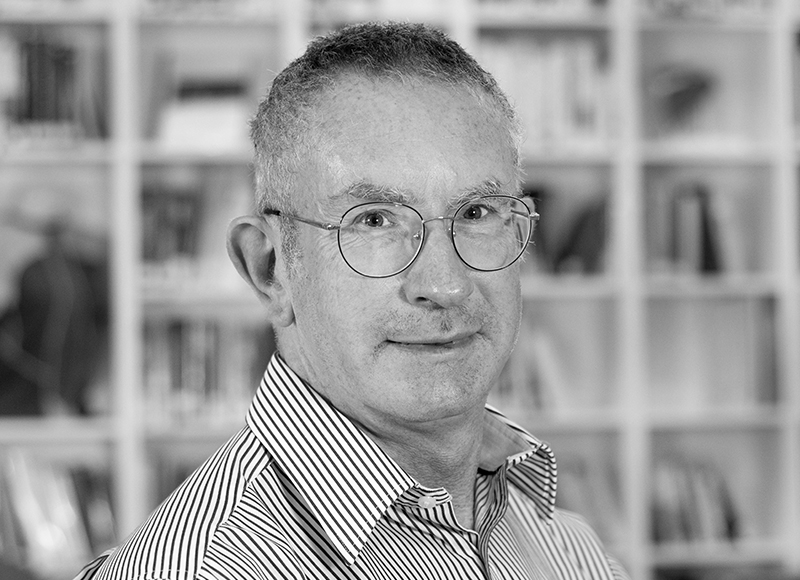Blog:
Healthcare in a post-COVID world
How will COVID-19 change healthcare?...... →
For general enquiries please contact us on
+44 1223 248888
enquiries2025@innoviatech.com
St Andrew's House, St Andrew's Road
Cambridge CB4 1DL United Kingdom
FIND US
What are the elements that create a passion to improve?...
8th June 2020
In my last blog, I described how the extremes of the COVID-19 crisis are a huge spur for innovation, and how “understanding the problem” thoroughly is the foundation of good innovation practice.
Since then, I have seen countless examples of remarkable and successful innovation in the face of COVID-19 challenges, both inside and outside of Innovia’s business. It prompted me to consider the real drivers for innovation. Not the process – which I discussed in my last blog – but the underlying motivation.
My conclusion: innovation is driven by a passion to improve. When you’re asking colleagues to innovate, think about how you can best support them. What are the elements that create a passion to improve?
Passion is about a pull towards the future. It has two key elements:
• a vision for “better”.
• a stake in the outcome.
Improvement recognises what needs to change. It also has two elements:
• a recognition of the problem-solution gap relevant to the situation.
• an understanding of your own agency – your belief that you can contribute in some way.
So, my equation for what drives innovation is:
What drives innovation = a vision for better + stake in the outcome + recognition of a gap + understanding of agency
You may recognise examples from your experience. I’ll illustrate it with two non-work examples that inspired me. I can talk freely about these, while confidentiality limits what I can say about Innovia work. Successful innovation should mean successful implementation, and I think these both qualify.
The first is close to home. My wife Sam has been actively involved in building cohesion in the local community (about 4000 households) for the last three years. When the UK COVID-19 lockdown hit, it became clear that a lot of vulnerable people needed food and day-to-day support. Because Sam has links to local government, she knew they didn’t have the resources to help. This was the gap: the community had to help itself, and its stake in the outcome was clear. Underpinned by her vision for better, she set about quickly gathering volunteers, and instilling them with a sense of agency to enable action in this unfamiliar scenario.
Within a week she had a dozen volunteers planning protocols and outreach channels and by day 10 there was a network of over 100 helpers, a 24-hour dial-in helpline, and prioritization and task distribution system. The network was up and delivering shopping services, medicines, companions, dog walking, and more. Soon, local government was integrated into her system, and the model was linked up across the whole of Cambridge at grass-roots level, coordinated in weekly videoconferences. I believe her success came through the ability to communicate the gap and the vision, and to inspire helpers that, together, they could build something remarkable. Not forgetting a big dollop of goodwill and determination! Driven by this success, Sam has gone on to build a local food hub which offers a free “supermarket” to families in need.
My second inspiring example comes from a YouTuber my son introduced me to: Destin Sandlin, a.k.a. SmarterEveryDay. He reminds me of Innovians. He’s a mine of fun and learning. He teaches fascinating science in an entertaining way and takes a life lesson from each episode. I recommend him!
The relevant 16-minute video (https://www.youtube.com/watch?v=sbEj7M3aZIg) is where he builds a supply chain for PPE (visors, masks) for local hospitals fighting COVID-19 in Huntsville, Alabama. In the video, you can clearly see him recognise the gap, and his own agency. He develops a clear and nuanced vision for what is needed. He doesn’t only churn out the 3D prints, he finds exactly what the hospitals need and builds the whole supply chain from a community of makers through sanitisation, sterile bagging, inventory control, and delivery. To do this, he gathers a wide variety of volunteers with different skills, giving them distinct roles and hence a stake in the outcome.
So how is this relevant for our work at Innovia? The people and companies we work with have had to rapidly adapt to new ways of working, new company priorities, and new types of interaction. Teams can struggle to sustain motivation in the turmoil and change. Priorities have changed at the top level. Leaders need to help translate changes into both a credible high-level vision and definition of specific gaps – or give the team enough contextual information to enable people to identify gaps for themselves. Individuals stranded at home may lack a sense of agency, especially given the other constraints caused by the crisis. They may feel detached for the company and lack a feeling of stake. These last two points are not easy to ‘fix’, however starting with the vision and gaps, good coaching conversations can help senses of agency and stake return, driving a positive spiral. The important thing is for you to first recognise what components of motivation are missing. Good luck!

I’m a physicist and co-founder of Innovia, and I’ve been inspired and educated by smart clients and colleagues for over 30 years. I can’t stop innovating, especially at home, and I drive my family nuts.